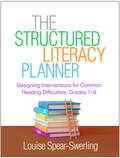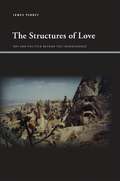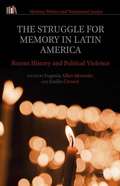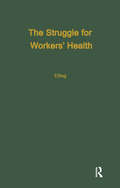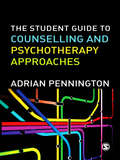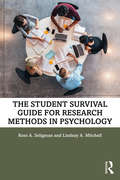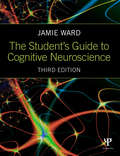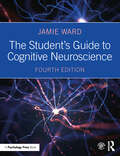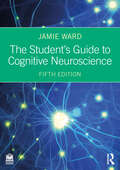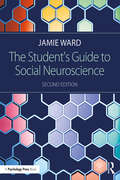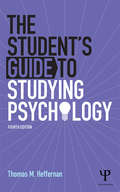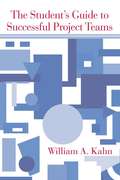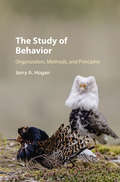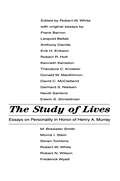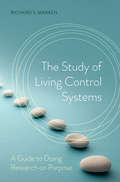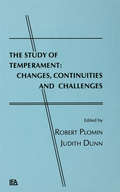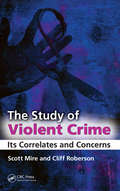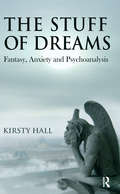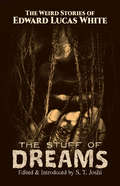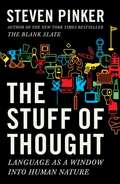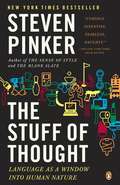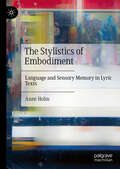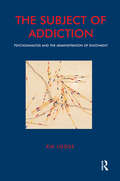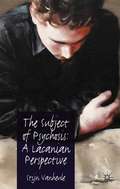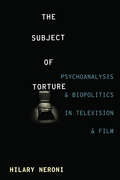- Table View
- List View
The Structured Literacy Planner: Designing Interventions for Common Reading Difficulties, Grades 1-9
by Louise Spear-SwerlingStructured Literacy (SL) approaches are increasingly recognized as the gold standard for teaching struggling readers. This highly practical book walks educators through designing SL interventions for students with common types of reading difficulties--word reading, comprehension, or a combination of both. Louise Spear-Swerling offers tools for assessing students' reading profiles and tailoring SL to their needs. In a convenient large-size format, the volume is packed with case studies, sample lesson plans addressing both early and advanced stages of reading, instructional activities, and application exercises for teachers. A chapter on English language structure presents essential foundations for implementing SL effectively. The companion website features a knowledge survey about language structure (with answer key), as well as downloadable copies of the book's 14 reproducible forms. See also Louise Spear-Swerling's edited volume, Structured Literacy Interventions: Teaching Students with Reading Difficulties, Grades K–6, which surveys SL interventions across all components of literacy.
The Structures of Love: Art and Politics beyond the Transference (SUNY series, Insinuations: Philosophy, Psychoanalysis, Literature)
by James PenneyBoth Freud and Lacan defined the transference as the ego's last stand—its final desperate attempt to keep the truth of the unconscious at bay. Both also viewed the transference as a social phenomenon.In The Structures of Love James Penney argues that transference is the concept with which psychoanalysis thinks through the unconscious demands that circumscribe and can sabotage our creative initiatives in the arts and politics. Penney suggests a method of cultural analysis that enables us to identity the transformative potential of genuine artistic and political acts. He stages a dialogue between Lacan's psychoanalysis and the philosophy of Alain Badiou; includes chapters on Frantz Fanon and Jean Genet, Chantal Akerman and Lucien Freud; and explores the aesthetic, political, and ethical consequences of the transference idea, pushing it into exciting new territory.
The Struggle for Memory in Latin America
by Eugenia Allier-Montaño Emilio CrenzelThis multi-disciplinary volume analyzes struggles over the memory of past political violence in Argentina, Brazil, Chile, Colombia, the United States, Guatemala, El Salvador, Mexico, Paraguay, Peru, and Uruguay. Each chapter offers a comprehensive history of the political violence that occurred in the second half of the twentieth century, analyzing its links with 1) the international context of the cold war, 2) the particular forms of repression and authoritarianism that prevailed in the domestic setting, 3) the social inequalities that were reinforced, and 4) the political, economic, and cultural transformations that Latin American societies were undergoing at the time. Considering the different paths that Latin American countries have taken in their efforts to confront history, the chapters examine how relevant actors look back on past events and vie with one another to give these events meaning in the public sphere. For each country examined, contributors consider the initiatives of transnational, regional, and national actors, as well as factors including class, gender, ethnicity, and geographic location. Chapters give political- and social-historical perspectives and employ tools from a variety of disciplines, including memory studies, history, political science, sociology, and anthropology.
The Struggle for Workers' Health
by Ray H. EllingTo better understand how strong worker protection systems differ from weak ones, this volume reports and interprets a study carried out in six nations-Sweden, Finland, The German Democratic Republic, The Federal Republic of Germany, The United Kingdom of Great Britain and Northern Ireland, and the United States of America. The work involved interviews with reputational leaders of different interest groups as well as observations, extensive document study and correspondence with key informants.
The Student Guide to Counselling & Psychotherapy Approaches
by Adrian PenningtonThis pocket guide to modality approaches in counselling & psychotherapy is a one-stop-shop for trainees on introductory counselling courses. It describes 12 models of therapy, as well as introducing the origins of counselling and providing guidance and tips on practical issues like time-keeping, supervision, endings and boundaries. Each short approach-specific chapter has a consistent structure which allows easy comparison and cross-referencing between the modalities. The chapters cover - origins & background - big names & big ideas - how the approach works & who it′s for - critical considerations - identifying features - reflection & summary - learning ideas & suggested reading This book is essential reading when choosing a professional counselling training in which to specialise, or if you just want an overview of other counselling modalities outside of your own. Those trained or training in wider metal health and psychology will also find it an useful overview of counselling approaches. Adrian Pennington is a Counselling Psychologist, Performance Psychologist, Clinical Supervisor, Trainer in Counselling and Mediator.
The Student Survival Guide for Research Methods in Psychology
by Ross A. Seligman Lindsay A. MitchellThe Student Survival Guide for Research Methods in Psychology is designed to support students enrolled in undergraduate or graduate level research methods courses by providing them with the tools they need to succeed. It goes beyond course material to help students engage more fully with research methods content. This survival guide presents clear step-by-step instructions that will help students hone the basic skills to succeed and thrive in their research methods classes and to navigate common pitfalls. The book covers core practical skills, like formatting and writing at an APA standard, understanding research literature (particularly academic journals), using SPSS, and broader skills like how to communicate with your professor, time management, and teamwork skills. It is a highly effective primer text for all psychology students undertaking research methods courses and will also be particularly helpful for students who are currently undertaking these modules and don’t feel fully prepared for them.
The Student's Guide to Cognitive Neuroscience
by Jamie WardReflecting recent changes in the way cognition and the brain are studied, this thoroughly updated third edition of the best-selling textbook provides a comprehensive and student-friendly guide to cognitive neuroscience. Jamie Ward provides an easy-to-follow introduction to neural structure and function, as well as all the key methods and procedures of cognitive neuroscience, with a view to helping students understand how they can be used to shed light on the neural basis of cognition. The book presents an up-to-date overview of the latest theories and findings in all the key topics in cognitive neuroscience, including vision, memory, speech and language, hearing, numeracy, executive function, social and emotional behaviour and developmental neuroscience, as well as a new chapter on attention. Throughout, case studies, newspaper reports and everyday examples are used to help students understand the more challenging ideas that underpin the subject. In addition each chapter includes: Summaries of key terms and points Example essay questions Recommended further reading Feature boxes exploring interesting and popular questions and their implications for the subject. Written in an engaging style by a leading researcher in the field, and presented in full-color including numerous illustrative materials, this book will be invaluable as a core text for undergraduate modules in cognitive neuroscience. It can also be used as a key text on courses in cognition, cognitive neuropsychology, biopsychology or brain and behavior. Those embarking on research will find it an invaluable starting point and reference. The Student's Guide to Cognitive Neuroscience, 3rd Edition is supported by a companion website, featuring helpful resources for both students and instructors.
The Student's Guide to Cognitive Neuroscience
by Jamie WardReflecting recent changes in the way cognition and the brain are studied, this thoroughly updated fourth edition of this bestselling textbook provides a comprehensive and student-friendly guide to cognitive neuroscience. Jamie Ward provides an easy-to-follow introduction to neural structure and function, as well as all the key methods and procedures of cognitive neuroscience, with a view to helping students understand how they can be used to shed light on the neural basis of cognition. The book presents a comprehensive overview of the latest theories and findings in all the key topics in cognitive neuroscience, including vision, hearing, attention, memory, speech and language, numeracy, executive function, social and emotional behavior and developmental neuroscience. Throughout, case studies, newspaper reports, everyday examples and studentfriendly pedagogy are used to help students understand the more challenging ideas that underpin the subject. New to this edition: Increased focus on the impact of genetics on cognition New coverage of the cutting-edge field of connectomics Coverage of the latest research tools including tES and fNIRS and new methodologies such as multi-voxel pattern analysis in fMRI research Additional content is also included on network versus modular approaches, brain mechanisms of hand-eye coordination, neurobiological models of speech perception and production and recent models of anterior cingulate function. Written in an engaging style by a leading researcher in the field and presented in full color including numerous illustrative materials, this book will be invaluable as a core text for undergraduate modules in cognitive neuroscience. It can also be used as a key text on courses in cognition, cognitive neuropsychology, biopsychology or brain and behavior. Those embarking on research will find it an invaluable starting point and reference. This textbook is supported by an extensive companion website for students and instructors, including lectures by leading researchers, links to key studies and interviews, interactive multiple-choice questions and flashcards of key terms.
The Student's Guide to Cognitive Neuroscience
by Jamie WardReflecting recent changes in the way cognition and the brain are studied, this thoroughly updated fifth edition of this bestselling textbook provides a comprehensive and student-friendly guide to cognitive neuroscience. Jamie Ward provides an easy-to-follow introduction to neural structure and function, as well as all the key methods and procedures of cognitive neuroscience, with a view to helping students understand how they can be used to shed light on the neural basis of cognition.The book presents a comprehensive overview of the latest theories and findings in all the key topics in cognitive neuroscience, including vision, hearing, attention, memory, speech and language, executive function, social and emotional behavior, and developmental neuroscience. Throughout, case studies, newspaper reports, everyday examples, and student-friendly pedagogy are used to help students understand the more challenging ideas that underpin the subject. This edition features expanded coverage of consciousness, a combined chapter on literacy and numeracy, and increased coverage of brain networks and computational approaches.Written in an engaging style by a leading researcher in the field and presented in full color including numerous illustrative materials, this book will be invaluable as a core text for undergraduate modules in cognitive neuroscience. It can also be used as a key text on courses in cognition, cognitive neuropsychology, biopsychology, or brain and behavior. Those embarking on research will find it an invaluable starting point and reference.This textbook is supported by an extensive collection of free digital resources for students and instructors, including lectures by leading researchers, links to key studies and interviews, multiple-choice questions, and interactive flashcards to test your knowledge. Visit the Instructor & Student Resources website at routledgelearning.com/wardcognitiveneuroscience.
The Student's Guide to Social Neuroscience
by Jamie WardSocial neuroscience is a rapidly growing field which explains, using neural mechanisms, our ability to recognize, understand, and interact with others. Concepts such as trust, revenge, empathy, prejudice, and love are now being explored and unravelled by neuroscientists. This engaging and cutting-edge text provides an accessible introduction to the complex methods and concepts of social neuroscience, with examples from contemporary research and a blend of different pedagogical features helping students to engage with the material, including essay questions, summary and key points, and further reading suggestions. The second edition of this ground-breaking text has been thoroughly revised and expanded to reflect the growing volume of evidence and theories in the field.?Notable additions include a greater emphasis on genetics and hormones, and the expansion of topics such as cultural neuroscience, emotion regulation, biological markers of autism, power and status, social categorization, and new accounts of mirror neuron functioning. The book is supported by a fully updated companion website, featuring student resources including lecture recordings, multiple choice questions and useful web links, as well as PowerPoint slides for lecturers. Richly illustrated in attractive full-color, with figures, boxes, and ‘real-world’ implications of research, this text is the ideal introduction to the field for both undergraduate and postgraduate students in fields such as psychology and neuroscience.
The Student's Guide to Studying Psychology
by Thomas M HeffernanStudying a degree course in psychology, even if you’ve taken the subject before university, requires a whole range of new skills and knowledge. And the 4th edition of this best-selling guide is an invaluable companion. It can not only help you to get a good final degree, but will also support you in making informed choices towards either a career or further study. Updated to include the latest developments in the field, the new edition provides practical and helpful guidance on everything a psychology student encounters throughout their degree, including: Writing essays and research reports, including how to get your referencing right. Guidelines for researching ethically using humans or animals An overview of research methods and statistics, including qualitative methods Tips on how to approach and pass your exams Advice on becoming a graduate, including preparing your CV and making the most of your degree Featuring advice to help you every step of the way, the book also includes a library of weblinks to provide further resources to support your studies. This is an essential book for any psychology student wishing to make the most of their degree course.
The Student's Guide to Successful Project Teams
by William A KahnIt is common for undergraduate and graduate students across various disciplines to be placed on teams and assigned group project research reports and presentations which require them to work together. For example a psychology course requires teams to develop, conduct, analyze and present the result of their experiments, a marketing course requires student project teams to prepare marketing plans and present their conclusions, and an organizational behavior course forms teams for the purpose of researching the cultures of different organizations and making presentations about their findings. This new guidebook will be a core text on how to help student project teams confront and successfully resolve issues, tasks and problems. Sections include conceptual material, stories and illustrations, and exercises. Students and teachers in Organizational Behavior, Management, Marketing and all psychology disciplines will find this book of interest.
The Study of Behavior: Organization, Methods, and Principles
by Jerry A. HoganBehavior studies now span a variety of sub-disciplines, including behavioral ecology, neuroscience, cognitive psychology and evolutionary developmental biology. While the fields' rapid growth has led to startling new insights into animal behavior, it has brought increasingly fragmented approaches to the subject. Integrating ideas and findings from a range of disciplines, this book provides a common framework for understanding diverse issues in behavior studies. The framework is derived from classical ethology, incorporating concepts and data from research in experimental psychology, neurophysiology and evolutionary biology. Hogan outlines the origin and development of major ideas and issues in the field, drawing on examples throughout to highlight connections across sub-disciplines. Demonstrating how results in one area can directly inform work in others, the book ultimately proposes concepts to facilitate new discussions that will open the way for improved dialog between researchers across behavior studies.
The Study of Lives: Essays on Personality in Honor of Henry A. Murray
by Robert W. WhiteThe Study of Lives reveals for the first time the extent of Henry A. Murray's considerable influence on the study of personality. Throughout his long and distinguished career, he has either trained or strongly influenced some of the world's leading psychologists, eighteen of whom have written fascinating essays for this book. The range of topics presented here is as diverse and highly original as Murray's own ideas about personality. Everyone concerned with the study of personality will find this book an excellent sampling of the best work being done in the field."The study of lives" is a phrase Henry A. Murray has often used to describe his own work, and it suggests his central conviction that living beings must be studied as living wholes. Personality, he has repeatedly pointed out, is a dynamic process-a constantly changing configuration of thoughts, feelings, and actions occurring in a social environment and continuing throughout life. If small parts and short segments of human affairs have to be isolated for detailed scrutiny, they must still be understood as parts of a patterned organic system and as segments of a lifelong process. This has never meant for him that all research should take the form of collecting life histories, although his contributions along this line have been outstanding. It implies simply that isolating, fragmenting, and learning just a tiny bit about a lot of people tend to carry us away from what is most worth studying.The essays in this book are grouped under headings that represent some of Murray's strongest interests: His conception of personality as a dynamic process is reflected in Part I, which deals with continuities and changes in the course of life. His interest in devising procedures suitable for disclosing live feelings, fantasies, and adaptations and his insistence on the necessity for an adequate taxonomy of carefully discriminated, carefully defined variables are represented in the papers of Part II. His view that creativity is a central property of human nature has contributed to the reflections and researches that make up Part III. Finally, his concern with values--the great blind spot of traditional science but so obviously a momentous problem for contemporary lives and societies--has been taken up in several different ways by the authors of Part IV.
The Study of Living Control Systems: A Guide to Doing Research on Purpose
by Richard S. MarkenThis book is a guide to doing a new kind of psychological research that focuses on the purposes rather than the causes of behavior. The research methods described here are based on a theory of behaviour called Perceptual Control Theory (PCT) that views organisms as purposeful rather than mechanical systems. According to PCT, purposeful behaviour involves acting to control perceptual input variables. Thus, understanding the purposeful behaviour of living organisms is a matter of determining the perceptual variables they are controlling when they are carrying out various behaviors. This book outlines research methods that determine what perceptual variables an organism is controlling, how it controls those variables, and why. It also describes methods for studying how an organism develops the ability to control different perceptions and how consciousness might be involved in this process.
The Study of Temperament: Changes, Continuities, and Challenges
by Robert Plomin and Judith DunnFirst Published in 1986. Routledge is an imprint of Taylor & Francis, an informa company.
The Study of Violent Crime: Its Correlates and Concerns
by Cliff Roberson Scott MireViolence is a complex subject that is rooted in a multitude of disciplines, including not only criminology but also psychology, sociology, biology, and other social science disciplines. It is only through understanding violence as a concept that we can hope to respond to it appropriately and to prevent it. The Study of Violent Crime: Its Correlates
The Stuff of Dreams: Anxiety, Fantasy, and Psychoanalysis
by Kirsty HallMany texts about anxiety are based either in the philosophical tradition or within the medical model under the guise of discussions about post-traumatic stress disorder. In the case of fantasy, however, the usual sources of discussion are in literary and cultural criticism. Bringing the two together offers the scope for a book with an original theme. The balance between clinical ideas, philosophical ideas and literary sources is aimed at keeping both potential audiences interested. Clinicians may find the idea of thinking 'dialectically' helpful with their patients. Although this approach is implied in both Freud and Lacan, this is the first book to put dialectics 'centre stage' in terms of understanding the patient's discourse. As far as general readers are concerned, most texts on fantasy do not 'home in' on the contribution of anxiety to the constantly changing content of fantasy.This book offers a new approach to the problem of anxiety. It suggests that our fantasies (both public and private) offer the key to understanding our anxieties and vice versa.
The Stuff of Dreams: The Weird Stories of Edward Lucas White (Dover Horror Classics)
by S. T. Joshi Edward Lucas WhiteThis original compilation presents chilling tales of terror by an unjustly neglected author. Inspired by the works of Edgar Allan Poe as well as his own vivid nightmares, Edward Lucas White (1866-1934) weaves a tapestry of weird stories populated by ghouls, monsters, a witch doctor, and creatures of ancient myths. The collection features White's most famous story, "Lukundoo," a gripping fable of an American explorer who incurs the wrath of an African sorcerer. Other tales include "Sorcery Island," an uncanny foreshadowing of television's The Prisoner, "The Flambeau Bracket," "The House of the Nightmare," "The Song of the Sirens," and five other stories. Additional selections include the haunting poems "Azrael" and "The Ghoula" and an essay in which the author reflects on the influence of dreams in his fiction. Editor S. T. Joshi provides an informative Introduction to White's life and work.
The Stuff of Thought: Language as a Window into Human Nature
by Steven PinkerThe author explains how the mind works by examining the way we use words. Pinker takes on scientific questions - such as how language affects thought, and which of our concepts are innate - as well as questions from the headlines and everyday life.
The Stuff of Thought: Language as a Window into Human Nature
by Steven PinkerThis New York Times bestseller is an exciting and fearless investigation of language Bestselling author Steven Pinker possesses that rare combination of scientific aptitude and verbal eloquence that enables him to provide lucid explanations of deep and powerful ideas. His previous books?including the Pulitzer Prize finalist The Blank Slate?have catapulted him into the limelight as one of today?s most important popular science writers. In The Stuff of Thought, Pinker presents a fascinating look at how our words explain our nature. Considering scientific questions with examples from everyday life, The Stuff of Thought is a brilliantly crafted and highly readable work that will appeal to fans of everything from The Selfish Gene and Blink to Eats, Shoots & Leaves.
The Stylistics of Embodiment: Language and Sensory Memory in Lyric Texts
by Anne HolmThis book presents a stylistic framework for analysing embodiment in lyric texts. While the assumption that our minds are embodied underlies most approaches in cognitive stylistics (and beyond), a systematic account of the linguistic patterns through which the body may be manifested in poetic expression has not yet been provided. Aiming to fill this gap, the book focuses on contemporary lyric texts that prominently engage the senses in depicting past experiences. Drawing its tools mainly from Cognitive Grammar and research on conceptual metaphors and iconicity, the book investigates how sensory language gives rise to simulated embodied responses. In doing so, the book views poetic expression as a complex interplay of modalities and seeks to expand the concept of the lyric by incorporating digital poetry, song lyrics, performance poetry and lyrical prose among its case studies. The book furthermore brings in current cognitive scientific research on the workings of memory to the analysis of sensory memory, most centrally the psychological phenomenon of mental time travel. It will be of interest to students and scholars working on stylistics, literary studies, and multimodal and intermedial studies.
The Subject of Addiction: Psychoanalysis and The Administration of Enjoyment
by Rik LooseDrugs and drug use are an integral part of human culture. Yet we know hardly anything about drugs, at least not the kind of knowledge that would help us to understand how drugs affect people and how people beome addicted to drugs. This is most surprising in the light of the vast amount of knowledge accumulated in the sciences. Psychoanalysis might not be an obvious choice for the treatment of addiction. Nevertheless, it is in an excellent position to make a contribution to a problem that has so far defied much of our understanding. By inviting people to speak about themselves, psychoanalysis has established a unique way of collecting clinical material, a material that surely must be immediately relevant coming as it does from the horse's mouth. With addiction on the increase, this fact alone justifies the necessity for a different approach.Providing a theoretical foundation for the argument that psychoanalysis should be seriously considered, and where possible incorporated into the treament of addicts, this thoughtful and innovative book can serve as an orientation in the ongoing front-line battle with addicts and addiction.
The Subject of Psychosis: A Lacanian Perspective
by Stijn VanheuleThis book discusses what Jacques Lacan's oeuvre contributes to our understanding of psychosis. Presenting a close reading of original texts, Stijn Vanheule proposes that Lacan's work on psychosis can best be framed in terms of four broad periods.
The Subject of Torture: Psychoanalysis and Biopolitics in Television and Film
by Hilary NeroniConsidering representations of torture in such television series as 24, Alias, and Homeland; the documentaries Taxi to the Dark Side (2007), Ghosts of Abu Ghraib (2007), and Standard Operating Procedure (2008); and "torture porn" feature films from the Saw and Hostel series, Hilary Neroni unites aesthetic and theoretical analysis to provide a unique portal into theorizing biopower and its relation to the desiring subject. Her work ultimately showcases film and television studies' singular ability to expose and potentially disable the fantasies that sustain torture and the regimes that deploy it.
